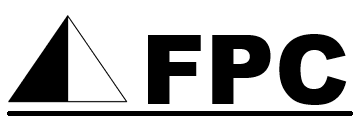
The Russian military doctrine dated back to 2010 completely redefined the concept of modern warfare. To be specific, it utilized a nonmilitary character’s military resources, which we now call hybrid warfare. Most importantly, the doctrine underlined the importance of information warfare to achieve initial political objectives without using military force, and if the latter were necessitated, further information would shape a favorable response from the world community. According to the Russian authors, this kind of asymmetric method included opening and closing periods. The former targets victim with a month-long coordinated nonmilitary campaign. The main objective is to decrease the morale of enemy forces and therefore depress the population. At the same time, the closing period is marked with deploying ground forces within the demobilized country. The article tries to outline such an example, which we can easily trace by Ukrainian case.
The story of the Ruso-Ukrainian confrontation kicked off in the 2000s when the pro-western party headed by Viktor Yushchenkogained a victory in the elections. The next colored revolution (after the Georgian one) inevitably deteriorated the two country’s relations. Moscow has always looked to the events from the lenses of geopolitics. Pro-western Ukraine would mean more NATO near the Russian border in the mindset of Putin. However, relations back to the normality when Viktor Yanukovistch stepped into the office, followed by the gamechanger events. Two of them are most important to mention. Firstly, he extended the lease of the port of Sevastopol to 2042. The second presidential decision was reversing the EU Association Agreement, which embroiled the country into a deep political crisis and cost Yanukovitsch his presidential post. It was the point when Russian elites pushed the opening period. However, it is also important to mention that the target of Russian propaganda was not the international community but the local population and Ukrainians. Firstly Russian media backed by Russian officials portrayed anti-governmental protests as orchestrated from the west. Again, Russian Minister of Foreign Affairs Mr. Lavrov mentioned the term geopolitical games while commenting on Maidan events. Moreover, Russian propaganda steps in by drawing narratives that would legitimize the further actions included militaristic ones as well. Firstly, it should be noted that the narrative of the unity of Russian and Ukrainian people was even used by President Putin. Secondly, post-maidan events were described as coup d’etat within the Russian mainstream media. Russian political leaders started pointing out the insecurity of Russians and Russian speaking people amidst the political crisis. From this point, we can assume that operation “Crimea” has kicked off.
We can distinguish Russian propaganda between pre and post annexation of Crimea. As Russian military doctrine emphasized the first phrase targeted Crimea’s population. Initial steps included: strategic preparation, exploring vulnerable points of state administrations, establishing networks of local NGOs, pro-Russian media channels, and diplomatic positions. Political preparation encompassed steps such as encouraging dissatisfaction between the central authorities and finally deploying the Little green men. It is noteworthy to mention that the word the Little green man was coined by the Russian media, referring to the patriotic people who wear uniforms of unconfirmed origins. A letter from president Yanukovych stated that Ukraine was in a state of chaos and anarchy, so the security of the people in Eastern Ukraine and Crimea was threatened. Crimea was annexed, and then Russian propaganda had two target groups: local Russians and world community. Firstly, Russia appealed to the referendum (not recognized by the West) held in Crimea, pointing at the right of self-determination. Kremlin propaganda then used Crimea’s annexation to augment Putin’s popularity, depicting him as the leader who was making Russia great again.
After the annexation of Crimea, Russia needed to alter worldwide attention. As I mentioned, the letter of Yanukovichincluded the Eastern regions of Ukraine and Crimea separately. So, Russian propaganda started to implemented new narratives, which mainly contained words from Soviet terminology. Firstly, Russian officials blamed the Ukrainian government for conducting ethnic cleansing in Eastern regions. Media quickly followed the flow. The words such as “Banderovtsy” and “Karatel” became most frequently used. From the eve of Maidanian protests, Kremlin propaganda tried to depict protesters as violent neo-nazis. To remind you, Stephan Bandera conducted operations against the Soviet Union. So, the terminology was extracted from the Great Patriotic War and served to create another narrative. In addition, Russia tried to set up an image of her non-involvement in the conflict. Russian journalists who were observing the situation in the Eastern region of Ukraine called the resistants the partisans. If we look again at Soviet terminology, we can identify that word partisan is a volunteer, a defender of people’s interests, and does not belong to the regular army. Furthermore, Russia created the myth of humanitarian crisis and under such pretext made humanitarian aid, which was told to deliver to the civilians, but it goes without saying it had another intention.
We can assume that Russian propaganda took a most important part in the Ukrainian game. However, if it worked well on the local population by augmenting Putin’s popularity, it did not shape the positive worldwide opinion. In contrast, Russia’s actions were condemned and, therefore, strict sanctions followed by Western countries. On the other hand, Russian propaganda ushered in a new era of modern warfare. Ukrainian case shows us how further hybrid wars would be conducted. Russian is in open confrontation with the Western powers, so we should not wait that Russian propaganda would cease being so toxic, in opposite it has become more dangerous as we are entering the phase of great power competition.
Shota Mgeladze
Research Fellow
The opinions and conclusions expressed are those of the author and do not necessarily reflect the views of The Embassy of the Republic of Poland in Tbilisi or The Ministry of Foreign Affairs of the Republic of Poland.
